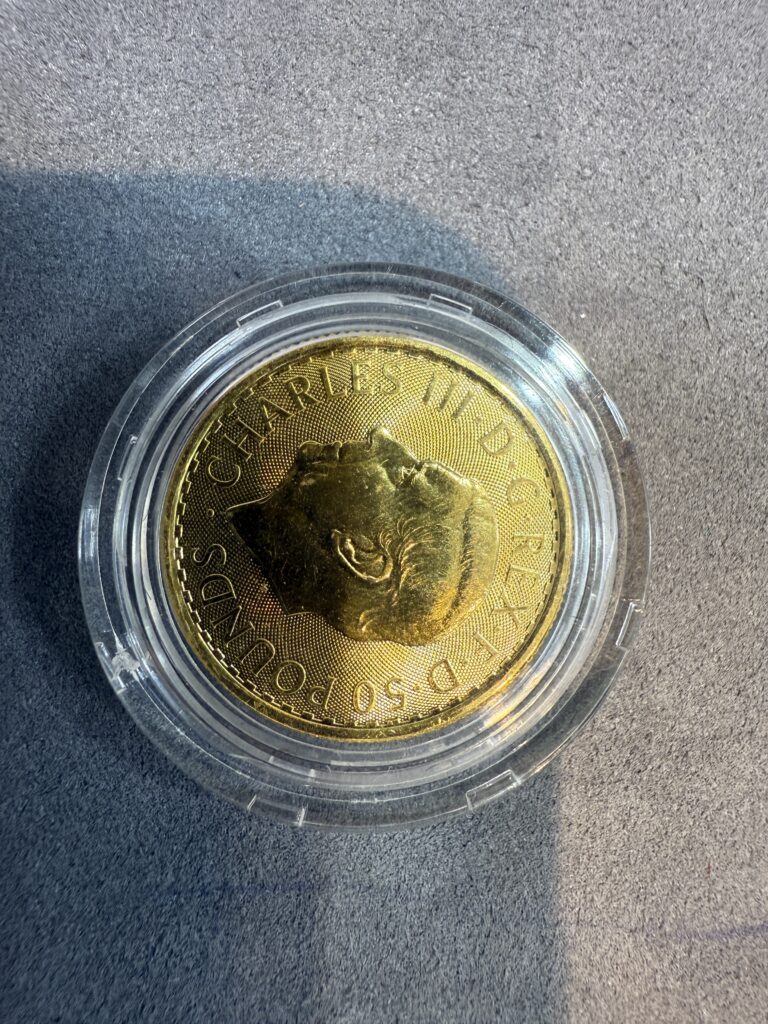Gold is o ne of the most sought after materials in human history. For thousands of years, its rich, yellow color, rarity and resistance to corrosion have been symbols for wealth, beauty and power. The evolution of the gold value is a constant in economic systems, from ancient civilisations to today’s financial markets.
ne of the most sought after materials in human history. For thousands of years, its rich, yellow color, rarity and resistance to corrosion have been symbols for wealth, beauty and power. The evolution of the gold value is a constant in economic systems, from ancient civilisations to today’s financial markets.
We will take a look at the evolution of gold value from ancient Egypt up to today’s role in global economics. Learn about the history of gold’s value.
Ancient Origins of Gold Value
Gold was first revered in Egypt for its beauty and significance. Egyptians believed that gold was the flesh of gods. This included the sun-god Ra. Gold was first used in 2600 BCE to create intricate jewelry and ceremonial objects. Gold was hoarded by Pharaohs in tombs in hopes that it would be with them after death.
The gold industry also had a major economic impact. Gold was not a currency but a sign of wealth and power in ancient Egypt. Gold was given as gifts by kings to their allies, or to reward loyal subjects. This reinforced its status as an expensive material.
Gold in the Classical Era
In the Classical era, gold’s value increased even further. Gold coins were minted by ancient civilizations such as the Greeks, Romans and Egyptians. They became an important medium of exchange. The scarcity of gold made it an excellent storehouse of history and the malleability of its metal allowed artisans to create coins of consistent shape and weight.
Gold coins, such as aureus, were used to finance the vast Roman Empire’s economy. Gold was used as a measure of wealth, for trade and to tax. Gold coinage was a turning point for the history of its economy.
The Middle Ages and Gold
Throughout the Middle Ages gold continued to gain in importance. Gold was a valuable metal that European monarchs used to establish dominance and trade. The gold coins such as the Florin and Ducat were widely known across the continents. This facilitated international trade.
Gold was responsible for conquests and conflicts. Gold was a major factor in the motivation of expeditions into Africa, Asia and America. Gold deposits discovered in America during the Age of Exploration helped to fuel the growth of European empires.
The Gold Standard Era
Gold’s price underwent another major change in the late 19th century and early 20th century with the introduction of gold standard. The value of the currency of each country was linked directly to an amount of gold under this system. Gold reserves were held by central banks to support their currencies, which ensured stability for international trade.
Gold became the most important measure of economic and wealth power. The gold standard was not without its problems. The system was weakened by financial crises such as the Great Depression in the 1930s. The government found it difficult to control monetary policy during times of economic insecurity, and eventually abandoned the gold standard by the middle 20th century.
The Modern Financial Market: Gold
Gold’s value has increased dramatically, yet its function in the world of finance and investment markets is changing. Gold is still a valuable asset on the financial market, even though it’s no longer used as a currency. During economic uncertainties, investors turn to gold for a safe haven. Gold’s value rises when inflation or geopolitical tensions are high, and people see it as an investment that is reliable.
Gold’s price is affected by many factors including the global economy, gold mining, and policies of central banks. The gold price history shows its adaptability and resilience to economic changes. During the global financial crisis of 2008, for example, investors sought to escape from difficult markets by buying gold.
The technological advances have also made it possible to purchase gold online in physical coins or bars. Platforms offer 1 ounce gold coins and gold bars.
Gold Beyond Investment
Gold is used widely in the electronics, dental, and aerospace industry due to its high conductivity, as well as its resistance to corrosion. Gold is a component of luxury items like jewelry and watches, which maintains its aesthetic and cultural appeal.
The popularity of gold bars and coins remains high among investors as well as collectors. The price of gold bars varies depending on the weight, purity and market conditions. Gold coins, however, are valued based on their historic significance as well as gold content.
How to Measure Gold and Value Gold Spread
The troy ounce is the standard measurement for gold. A 1-ounce coin is equivalent to a standard bar weight for investment. The price of gold includes other factors, such as the spread between buying and selling. These nuances help investors to make more informed decisions about gold trading.
The evolution of gold’s value is a timeless phenomenon. The evolution of gold’s value reflects the changing relationship between humanity and wealth, trade and economic stability. Its significance has not diminished since gold’s transformation from a divine symbol to a financial asset of global importance. Gold’s value and safety are unwavering in uncertain times. If you are interested in its history or want to buy gold online, Cash for Gold is the best place to start.

